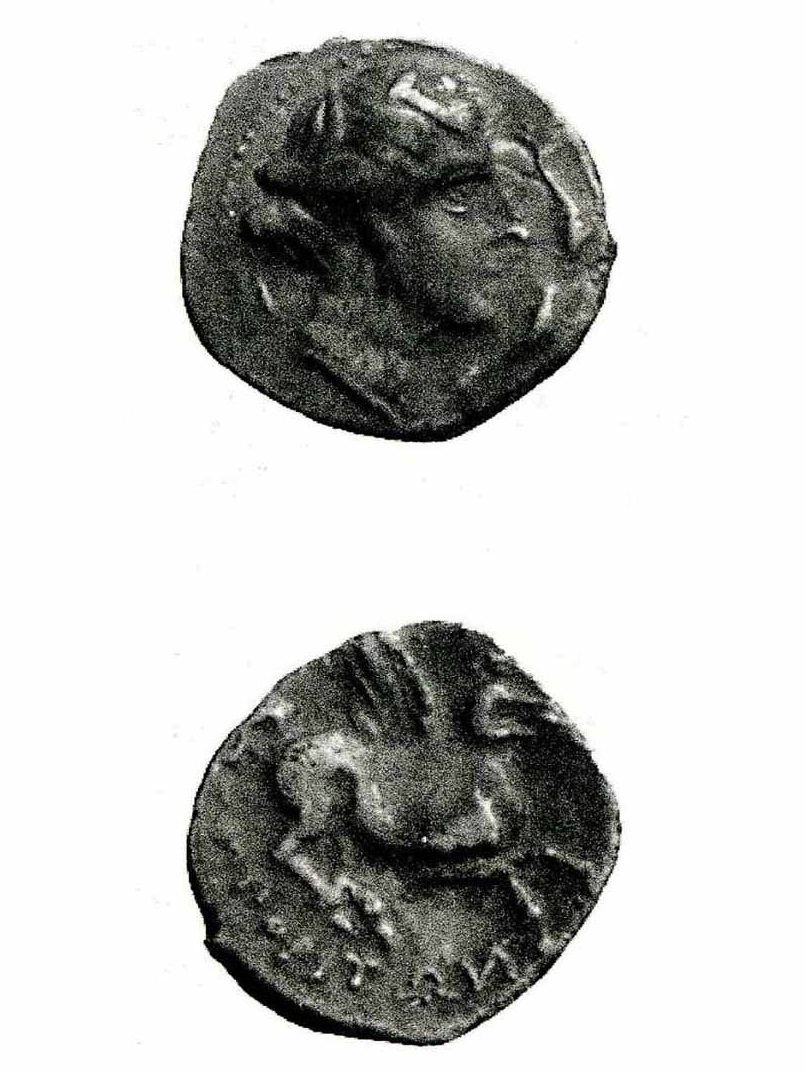
Chrysaor

Chrysaor is understood to be the twin brother of the better known mythical beast of Pegasus. Chrysaor, sometimes spelled Khrysaor, is represented in contrast to the winged equine figure of Pegasus as a winged wild boar. The name Chrysaor roughly translates to “golden-blade”, which scholars of ancient Greek mythology have interpreted in several ways. First, as the creature is porcine, the golden blades could be a direct reference to the tusks emerging at the sides of his snout.
Other academics believe that the "golden-blade" relates to war, as mythologically Chrysaor was favored by Ares, the god of war. According to this interpretation, the “golden-blade” could be in reference to the sword carried by an alternative representation of Chrysaor, a sword-wielding giant man sporting golden armor. Nonetheless, there are even scholars who chose to associate Chrysaor’s name with agriculture, representing golden blades of wheat, demonstrating the diversity of his iconography.
The origins of Chrysaor are lesser known; however, he springs from the same origins as the creation of Pegasus. When the snake-haired gorgon Medusa was slain by the hero Perseus, it is said that both Pegasus and Chrysaor either emerged from the neck of the decapitated corpse of Medusa or that once her blood dripped into the sea, the twin brothers were created. In contrast to his white horse-like brother, associated with divinity and purity, Chrysaor emerged as a more aggressive creature.
As previously mentioned, Chrysaor was highly favored by Ares the god of war. As such, he has often been depicted not as a beast at all, but instead as a warrior. According to the few documents that make references to Chrysaor, he eventually became the king of Iberia, one of the Greek’s western provinces. There, here married Callirhoe, daughter of the god of the sea Okeanos. The divine couple eventually bore a son, Geryon, represented as a warrior with three bodies and - based on some sources - they also had a daughter, the famous Echidna. Geryon was famous for bearing a shield upon which Chrysaor’s image appears.
Those that attempted to rationalise the mythological tales in antiquity, suggested though, that Chrysaor was not the father of a single son, but of three sons, who worked together as one, and were collectively known as Geryon.
The true extent of Chrysaor’s influence is not fully known, as there are few references to Chrysaor in surviving ancient Greek texts. Because of this, it can be assumed that Chrysaor was mainly a tertiary figure in Greek mythology. Or, as some scholars have suggested, the documents in which Chrysaor was primarily featured have been lost.

Sources
Hesiod, Theogony 280.
Naso, Publius "Ovid". Metamorphesis. p. 4.770.
Menoni, Burton. Kings of Greek Mythology. Lulu. p. 18
Smith, William, Dictionary of Greek and Roman Biography and Mythology, London (1873).
Ovid, Metamorphoses
Our Mobile Application
Check out Our Mobile Application "Ancient Greece Reloaded"


